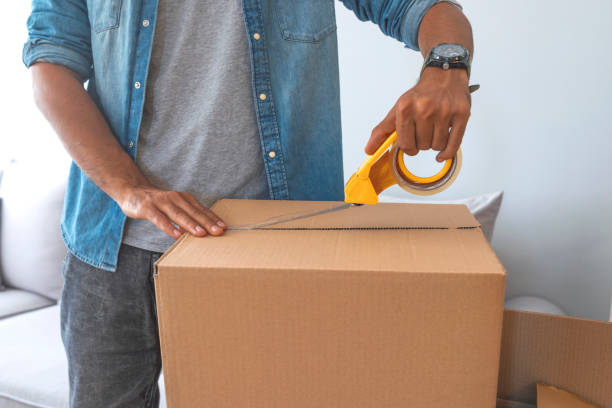Moving can be both difficult and stressful, but a great deal of this hardship occurs because of inadequate preparation.
Since packing is such a huge pitfall for first-time movers, we’ve assembled some tried and true packing tips that should have you on solid ground right from the start.
- Moving companies typically charge based on the amount of stuff you move.
• Determine how the service measures that amount, and then plan accordingly.
• Read the moving pack carefully. Most companies have specific packing requirements, and failure to comply can cause you to incur additional fees.
Packing Tips – Planning
- Plan your packing based on the rooms in your new residence. Try to keep all items specific to a room/area in the same boxes, but there are exceptions.
• Pack small, loose items together regardless of their appropriate room. This makes it easier to protect those items.
• Use small boxes to pack the heaviest items, and large boxes to pack multiple light items.
• Set aside enough time. Most people underestimate how long packing takes.
Packing Tips – What You’ll Need
- Tissue paper
• Packing paper or newspaper
• 2” packing tape
• Masking tape
• Scissors
• A utility knife
• Permanent markers
• Boxes
Packing Tips – Boxes
- There is a lot of diversity in boxes, including shapes, sizes, and styles.
• Take the time to consider what you’re moving and choose the boxes accordingly.
• You can usually get free boxes from your local grocery, but they’re only suitable for clothing, blankets, pillows, sleeping bags, and so forth.
• Do not under-pack because boxes because even professional-grade cartons will cave in. Use extra packing material or even blankets to fill the space in these boxes.
Packing Tips – Common Box Terminology
Note: The industry often refers to boxes as cartons. The terms are interchangeable.
- China Barrel or Dishpack – Heavy-duty boxes intended for glassware
• Double-wall – China Barrel boxes with an extra layer of protection
• Mattress – Boxes for mattresses and box springs available in bed sizes
• Mirror – Telescoping boxes used for framed pictures, glass, and mirrors
• Stretch Wrap – A plastic covering used to protect furniture
• Wardrobe – Boxes with a built-in bar that allows clothes and draperies to hang
Packing Tips – Common Box Sizes
- 1.5 cu. ft. – Small boxes intended for heavy items
• 3.0 cu. ft. – Boxes for pots, pans, toys, and small appliances
• 4.5 cu. ft. – Large boxes for bulky items, such as linens, towels, and toys
• 6.0 cu. ft. – Extra-large boxes used for lightweight items, such as lampshades and pillows
Packing Tips – Packing Glassware and Other Fragile Items
- Keep these items together.
• Use a heavy-duty, high-quality box. These boxes will absorb much of the vibrations that can damage these items.
• Use several layers of wrapping paper or newspaper for each item. It’s better to use “too much” than too little.
Packing Tips – Paring Down
Even if you handle the move yourself, the more you move the more it’ll cost in fuel, time, and other resources. One of the most important packing tips you can adhere to is to pare down. In many cases, it’s far more resource-effective to sell or dispose of an item, and then to purchase it again at the new location. Here’s a series of question you can ask yourself to help make a determination on any given item:
- Does it have sentimental value? If yes, then keep it.
• Is it replaceable?
• Does anyone still use it? Take this opportunity to rid yourself of all that “junk” you’ve collected over the years.
• Is there room for it in the new residence?
• Is it worth the cost of moving it?
Packing Tips – The “Garage Sale”
Now that you’ve made the difficult choices about what to leave behind, this is your chance to make some spending money that can help ease the move a great deal. In the good old days, people used garage sales to prepare for the move. Today, it’s often easier to move it all using a website such as eBay.
The Pack
- Pack room by room.
• Pack based on how soon you’ll need the items.
• As you finish a box, sort it based on weight—light, medium, or heavy.
• Try to limit heavy boxes to 50 pounds.
Technique
- Include cushioning and fill gaps with packing paper.
• Wrap fragile items prior to packing them.
• Set aside all items for a box, and then start with the heaviest items and work towards the lightest.
• Do not overstuff. The boxes should close flat.
• Seal boxes tightly, unless it must be open for inspection, after which you can seal it.
• Label the boxes clearly.
Labeling
- Write in large letters.
• Mark both the room and contents.
• Indicate notes, such as FRAGILE, NEED NOW, and THIS END UP.
• If you have a bill of lading, include it on each box.





Leave A Comment
You must be logged in to post a comment.